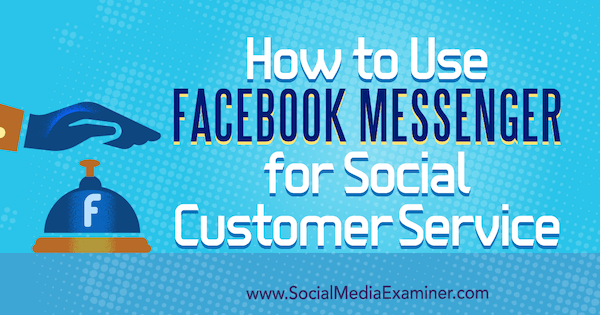
Why Messenger for the Front Lines of Customer Care?
According to USA Today, Facebook views Messenger for Business as a venue for “conversational commerce.” As head of Facebook Messenger David Marcus states, “…for so long, doing business was always conversational. Web (e-commerce) is truly an anomaly. It feels good to have a more human relationship when you’re buying things…”
Indeed, messaging apps are the perfect avenue to engage with customers and prospects. Customer care flows naturally out of those one-on-one conversations.
Facebook’s view arises from a trend: messaging could eventually replace social networking as the favorite online pastime. In 2015, the number of registered messaging app users was 25% larger than that of social media. In late 2015, 2.5 billion peopleregistered to use at least one messaging app, and technology and strategy consulting firm Activate expects the number to increase to 3.6 billion by 2018.
Facebook Messenger is at the forefront. In April 2017, the mobile Messenger app had 1.2 billion monthly active users worldwide. That places it second (behind WhatsApp) among mobile chat apps globally. Facebook Messenger is now overshadowing even China’s WeChat, which has dominated the Chinese messaging market with 600 million monthly active users.
Facebook Messenger is fast, mobile, and efficient, which makes it a great tool for business/customer interactions and a valuable platform for customer care. KLM leverages Messenger effectively for customer interactions. The airline created a multilingual pluginthat allows their audience to use Messenger to receive travel information, booking confirmation, boarding passes, and more.
Why Messenger for the Front Lines of Customer Care?
According to USA Today, Facebook views Messenger for Business as a venue for “conversational commerce.” As head of Facebook Messenger David Marcus states, “…for so long, doing business was always conversational. Web (e-commerce) is truly an anomaly. It feels good to have a more human relationship when you’re buying things…”
Indeed, messaging apps are the perfect avenue to engage with customers and prospects. Customer care flows naturally out of those one-on-one conversations.
Facebook’s view arises from a trend: messaging could eventually replace social networking as the favorite online pastime. In 2015, the number of registered messaging app users was 25% larger than that of social media. In late 2015, 2.5 billion people registered to use at least one messaging app, and technology and strategy consulting firm Activate expects the number to increase to 3.6 billion by 2018.
Facebook Messenger is at the forefront. In April 2017, the mobile Messenger app had 1.2 billion monthly active users worldwide. That places it second (behind WhatsApp) among mobile chat apps globally. Facebook Messenger is now overshadowing even China’s WeChat, which has dominated the Chinese messaging market with 600 million monthly active users.
Facebook Messenger is fast, mobile, and efficient, which makes it a great tool for business/customer interactions and a valuable platform for customer care. KLM leverages Messenger effectively for customer interactions. The airline created a multilingual plugin that allows their audience to use Messenger to receive travel information, booking confirmation, boarding passes, and more.
Chatbots Can Improve Customer Care Efficiency
Businesses are starting to embrace Messenger bots to enhance customer care. Not all chatbots are created equal though. The simple ones we’ve become accustomed to work like an automated phone operator: “Press 1 for business hours, press 2 to get directions to our store.” More sophisticated bots like Uber’s allow Facebook users to request a ride without even opening the app.
One obvious benefit of chatbots is that they can augment your online availability. With audience expectations of 24/7 accessibility on social channels, businesses have turned to automation to meet the demand.
You may be able to reduce labor costs associated with customer care by up to 30% by adding a chatbot to handle simple requests for information and initial interactions when your business is closed. Chatbots can also increase your customer base. For example, 1-800-Flowers acquired 70% of their new customers through chat.
